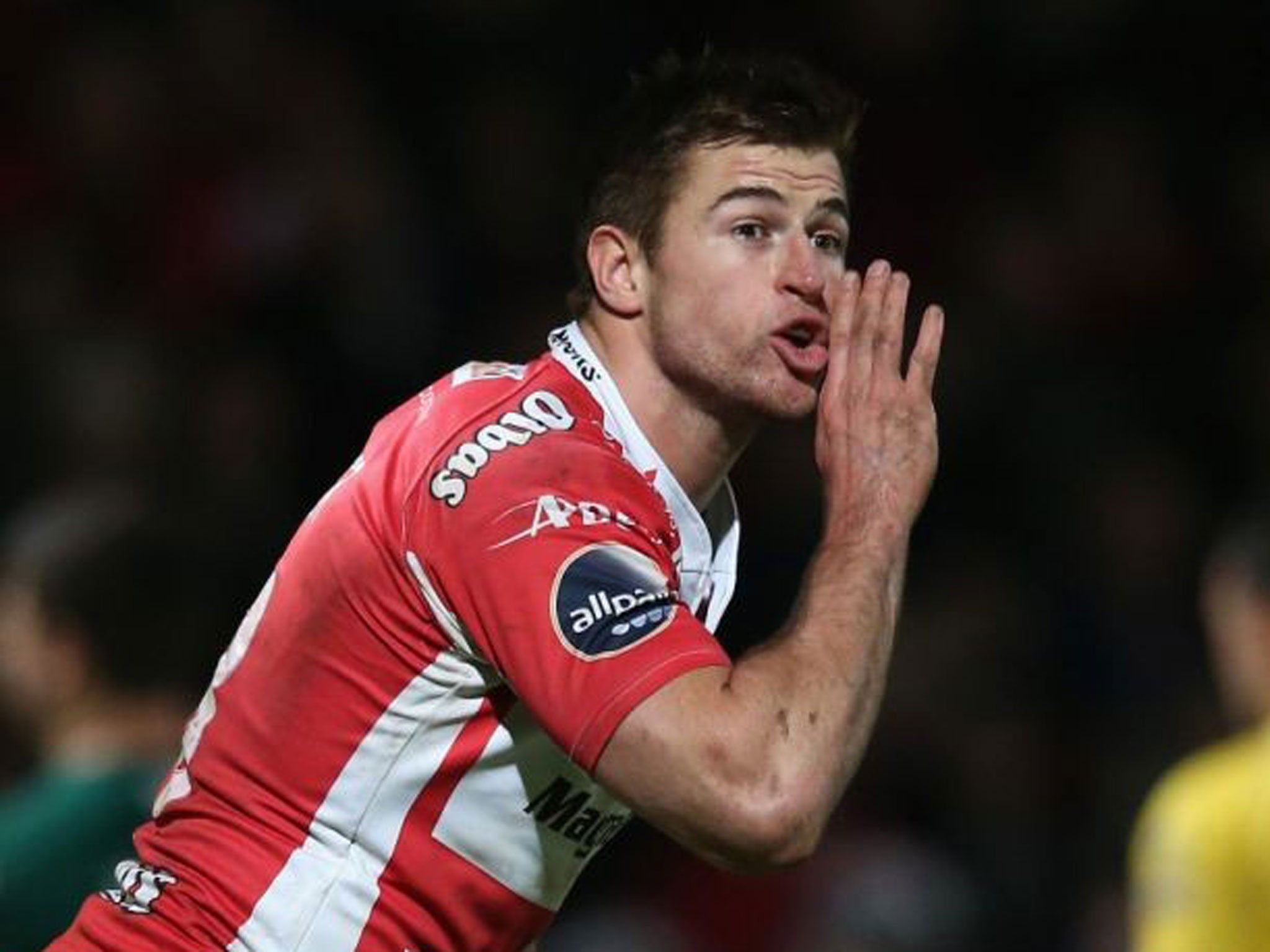Is Henry Trinder England’s answer at No 13?
Gloucester’s gifted outside-centre lost out on a place in the autumn internationals through injury, but is fit again and eyeing Six Nations spot

The England squad have a deadpan putdown for the players who attend training early in a Test week before being released on a Tuesday due to injury or non-selection. “A ‘competition winner’, that’s how the lads refer to you,” Henry Trinder says with a rueful smile, evoking the members of the public quite happy to be invited to practice sessions.
Not that the Gloucester centre has been alone in his misfortune. The injury rate associated with England’s No 13 jersey of late compels you to believe in superstition.
Trinder was pencilled in to be England’s outside-centre in last month’s three internationals at Twickenham until a hamstring strain denied him his senior debut, the opportunity in turn due to the torn pectoral muscle suffered in September by last season’s first choice, Manu Tuilagi. The Leicester wrecking-ball is out until the end of February and will miss at least three-fifths of the Six Nations.
Instead it was Saracens’ Joel Tomkins who started the autumn Tests, but the former rugby leaguer did not look a long-term prospect, and anyway he too is out now until February with a damaged knee.
The sob stories go on. Brad Barritt, another Saracen, has not played for three months, though he is due back soon. Then there are Mathew Tait, Kyle Eastmond, Anthony Allen, Jordan Turner-Hall, Dom Waldouck, Matt Banahan, James Simpson-Daniel, Matt Smith and George Lowe: all capped or Saxons No 12s and 13s of varying ages and aptitude who have been injured, short- or long-term, between the start of the current campaign and now. Further back, Luther Burrell and Elliot Daly have been nothing like trouble-free.
Now the good news: Trinder is fit again, and when his “cultured left foot”, as Gloucester’s director of rugby, Nigel Davies, describes it, dabbed a kick behind Edinburgh’s defence to create a try for Rob Cook in the Heineken Cup win at Murrayfield last Sunday it showed a little of the vision and skill-set that prompted England’s head coach, boss Stuart Lancaster, to want to promote Trinder directly from outside the senior and Saxons squads named in August, only for the 24-year-old to go lame.
“It was all lined up for Henry, he would have fitted the combinations England were looking at very well,” says Davies, referring to the 10-12 duo of Saracens’ Owen Farrell and Gloucester’s Billy Twelvetrees. “We have spoken about Henry guarding himself against not being too disappointed. Verbally, he lets everything come out and I love him for that.”
Lancaster was the Saxons’ coach when they won the Churchill Cup in summer 2011, with Twelvetrees and Trinder as the centres. Six months later, Lancaster succeeded Martin Johnson in charge of the senior side and summoned Trinder for training during the 2012 Six Nations – whereupon Trinder snapped his ankle ligaments. Last season a groin injury stalled him again. “The one thing I was grateful for last month,” says Trinder, “was taking away from Stuart and Catty and Faz [England’s backs coaches Mike Catt and Andy Farrell] how they want to play.”
At his club, Trinder is guided by Davies, a silken Wales centre in his day, and the player-assistant coach Mike Tindall, a midfielder out of the drawer marked ‘muscle’. “It’s great to have someone who’s experienced in your position telling you how to better your game,” Trinder says. “You listen to them more than if a prop is saying you’re doing this wrong.”
The royally-wed Tindall should know a “prince of centres” when he sees one. “Henry’s different to someone like Allan Bateman or Jerry Guscott, they glided on to passes,” Tindall says. “Henry is powerful as well. When he runs, he runs hard – and on short lines as well as the outside ones. He’s very good at drifting across with the pass and then, bang, stepping through and challenging people’s inside shoulders.
“He’s good at fixing players, and staying in a positive line to cut off their chasing tackles. And he’s got a left foot. He could play in place of Tuilagi for England, or with him, depending on who the fly-half is.
“We’ve got to keep him on the field as much as we can. It can come down to Henry being honest with himself when he’s feeling tight or tired.”
The Heineken Cup may just become Gloucester’s holy grail this season; the Cherry and Whites retain a quarter-final chance, and that is a relief set against their pipsqueak Premiership form with a struggling pack. The Tonga prop Sila Puafisi is set for his first appearance today, from the bench, at home to Edinburgh, and there are further eye-catching front-row signings for next summer: John Afoa confirmed, Richard Hibbard strongly rumoured. Davies says: “We played some good rugby last week, and it was one of our most comfortable wins for a while.”
Tindall and Zara Phillips have taken Trinder as a guest to two Cheltenham Gold Cups. “It’s great fun until you lose all your money – his tips are horrendous,” says Trinder. “But both he and Zara are very laid- back and it’s good times off the field.” With a new England squad to be named on 9 January, Trinder may finally be getting his on-field timing right too.
Subscribe to Independent Premium to bookmark this article
Want to bookmark your favourite articles and stories to read or reference later? Start your Independent Premium subscription today.

Join our commenting forum
Join thought-provoking conversations, follow other Independent readers and see their replies